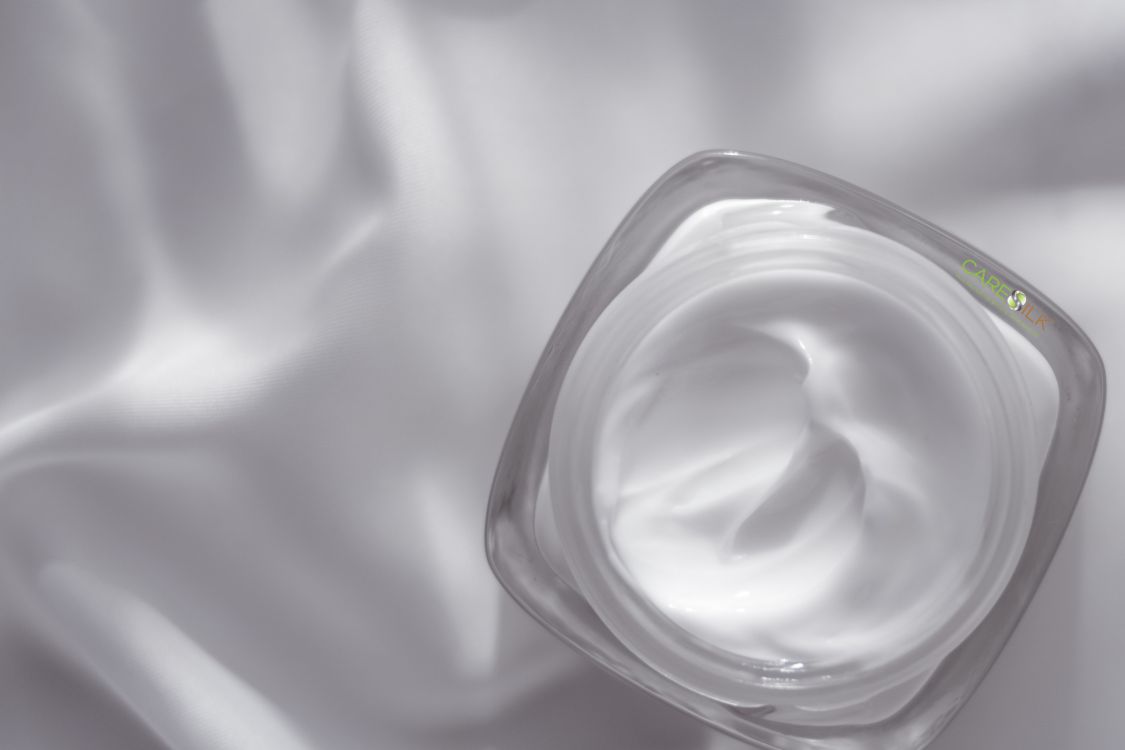Contemporary cosmetic research has identified sericin as one of the most promising natural anti-aging agents, thanks to its extraordinary ability to interfere with the molecular mechanisms of skin aging. This glycoprotein, characterized by a complex molecular structure rich in hydrophilic amino acids, exhibits superior antioxidant properties that position it as an ingredient of choice in next-generation cosmetic formulations.
The antioxidant mechanism of action of sericin
The anti-aging efficacy of sericin primarily resides in its ability to neutralize reactive oxygen species (ROS) through a dual mechanism of action. The protein acts as a direct scavenger of free radicals, thanks to the presence of specific amino acid residues that can donate electrons, stabilizing reactive molecules. Simultaneously, sericin stimulates the endogenous activation of cellular antioxidant enzymes, including superoxide dismutase and catalase, enhancing the skin's natural defense systems.
Research has demonstrated that sericin is capable of inhibiting lipid peroxidation of cell membranes, a key process in skin aging. This protective effect translates into greater stability of cellular structures and a significant reduction in oxidative damage that compromises skin tissue integrity. In vitro tests have shown antioxidant capacity comparable to, and in some cases superior to, established synthetic antioxidants such as ascorbic acid and tocopherol.
Modulation of collagen and elastin synthesis
One of the most relevant aspects of sericin's anti-aging action concerns its ability to modulate the biosynthesis of structural proteins in the extracellular matrix. The protein stimulates the activity of dermal fibroblasts, increasing the production of type I and III collagen, fundamental for maintaining skin firmness and elasticity. This effect manifests through the upregulation of specific genes involved in collagen synthesis and the modulation of dermal growth factors.
Simultaneously, sericin exerts an inhibitory action on matrix metalloproteinases (MMPs), enzymes responsible for mature collagen degradation. This dual action of synthesis stimulation and degradation inhibition results in a net improvement in the density and quality of collagen fibers, with consequent reduction in wrinkle depth and improvement in skin texture.
Advanced cosmetic applications and innovative delivery systems
The integration of sericin into anti-aging cosmetic formulations has required the development of sophisticated delivery systems to optimize its penetration and cutaneous bioavailability. Nanotechnologies have enabled the encapsulation of the protein in liposomes, nanospheres, and lipid carrier systems that facilitate its transport through the stratum corneum, overcoming the skin's natural barriers.
Concentrated serum formulations currently represent the most advanced frontier in the cosmetic application of sericin. These products, characterized by high concentrations of the active ingredient in aqueous or hydro-glycolic bases, allow for targeted application and optimized efficacy. The synergistic association with other bioactive peptides, hyaluronic acids of different molecular weights, and vitamin complexes further enhances the overall anti-aging effect.
Clinical efficacy and biometric parameters
Clinical studies conducted on volunteers have documented significant improvements in cutaneous biometric parameters following treatment with sericin-containing formulations. Instrumental analyses have shown an average 23% increase in skin hydration, an 18% reduction in periorbital wrinkle depth, and a 15% improvement in skin elasticity after eight weeks of treatment.
Post-treatment histological analysis revealed significant epidermal thickening and increased density of collagen fibers in the papillary dermis. These results confirm the efficacy of sericin not only as a superficial moisturizing agent but as an active modulator of cellular renewal and tissue repair processes.
Future perspectives and biotechnological developments
Biotechnological research is exploring new methods of sericin production through recombinant expression systems, which would allow for the obtaining of modified variants with enhanced anti-aging properties. Protein engineering applied to sericin opens innovative scenarios for the development of personalized cosmetic ingredients, adaptable to specific individual skin needs.
Evolution toward "smart" formulations that progressively release the active ingredient in response to environmental or physiological stimuli represents the future direction of sericin's cosmetic application. These systems promise to maximize anti-aging efficacy while minimizing side effects and optimizing consumer compliance.
Sericin therefore confirms itself as one of the most promising ingredients in the contemporary anti-aging cosmetics landscape, combining scientifically proven efficacy, environmental sustainability, and application versatility in a single active ingredient of exceptional technological value.


